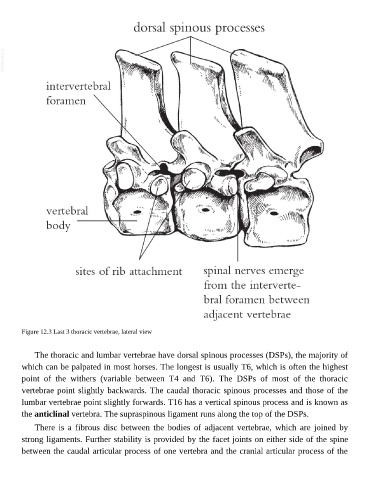Page 527 - The Veterinary Care of the Horse
P. 527
VetBooks.ir
Figure 12.3 Last 3 thoracic vertebrae, lateral view
The thoracic and lumbar vertebrae have dorsal spinous processes (DSPs), the majority of
which can be palpated in most horses. The longest is usually T6, which is often the highest
point of the withers (variable between T4 and T6). The DSPs of most of the thoracic
vertebrae point slightly backwards. The caudal thoracic spinous processes and those of the
lumbar vertebrae point slightly forwards. T16 has a vertical spinous process and is known as
the anticlinal vertebra. The supraspinous ligament runs along the top of the DSPs.
There is a fibrous disc between the bodies of adjacent vertebrae, which are joined by
strong ligaments. Further stability is provided by the facet joints on either side of the spine
between the caudal articular process of one vertebra and the cranial articular process of the

